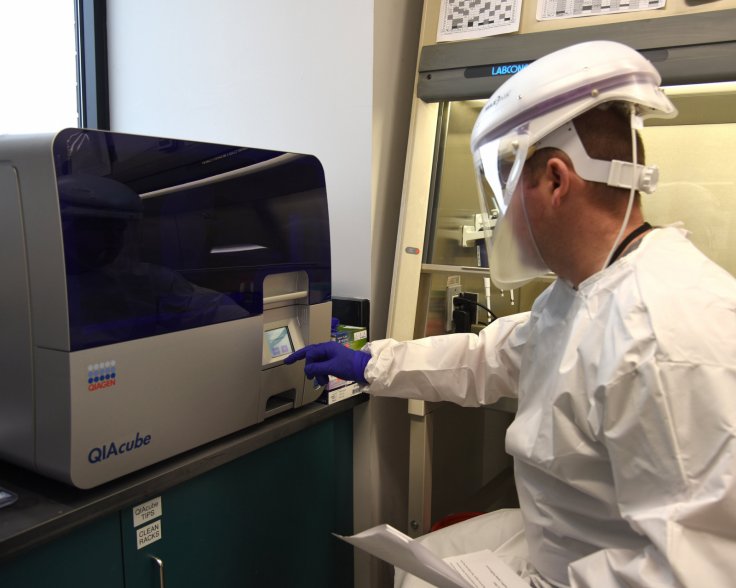The US government is racing against time to increase the number of medical labs that are able to test for the virus behind a surging Ebola outbreak in Uganda. Experts believe the Sudan strain is behind the current surge in Uganda. Health officials have expressed concerns about the real possibility of the virus entering the country.
The 2014 Ebola outbreak involved a strain called Zaire Ebolavirus. But the tests that were rolled out in the United States were never approved by the Food and Drug Administration to be used for diagnosing the Sudan strain.
Mary Choi from the Centers for Disease Control and Prevention had said last week that the CDC has been very active on the domestic preparedness front and addressing the issue of the lab testing has been a huge priority. Only eight members of the publicly-funded Laboratory Response Network, a few weeks ago, had the ability to test for the virus. Now, that number has risen to 22 labs across the network.

A Surging Wave of Ebola from Uganda
Health officials in Uganda detected the first case of Ebola virus' Sudan species on September 15. This prompted the United States to take notice and on October 6, it began screening travellers from Uganda at five of its airports and ordered health care workers to raise awareness about the outbreak.
Uganda has confirmed more than a hundred cases of the deadly virus. According to the CDC, cases have been observed in Kampala which is the capital city, and more than two dozen deaths have been reported. The WHO's Director-General Tedros Adhanom Ghebreyesus expressed concern that there may be more chains of transmission and more contacts. The health body said at least 60 people have contracted the virus, resulting in 44 deaths; but experts believe the death toll could be higher.
WHO is said to have been hesitant to admit the outbreak and jeopardized public support. The latest Ebola outbreak, which health officials described as a "strange illness", started spreading early in August. The first death in September-end had officials trying to swiftly contain the outbreak by placing the epicentre under a 21-day lockdown on October 15.
Symptoms Difficult to Distinguish
Experts say early Ebola symptoms like fever and fatigue can be difficult to distinguish from other infections. The infection becomes more intense, wherein the patient experiences severe diarrhea, bleeding and vomiting. According to the CDC, symptoms may appear from 2 to 21 days after contact with the virus with an average of 8 to 10 days. The patient may initially see dry symptoms such as aches, fever and fatigue, and then wet symptoms like diarrhea and vomiting as the person becomes sicker. The person may also experience sore throat, loss of appetite and abdominal pain.

The Ebola Virus Disease is rare, but deadly. There is a vaccine for the Zaire Ebolavirus, but it may not work against the current strain. WHO expects to deploy some promising new vaccine soon in Uganda to curb the outbreak. It should be noted that there are no rapid test kits available to detect infections by the Sudan Ebolavirus. Doctors draw blood samples from patients and send it to labs to test for the strain.









